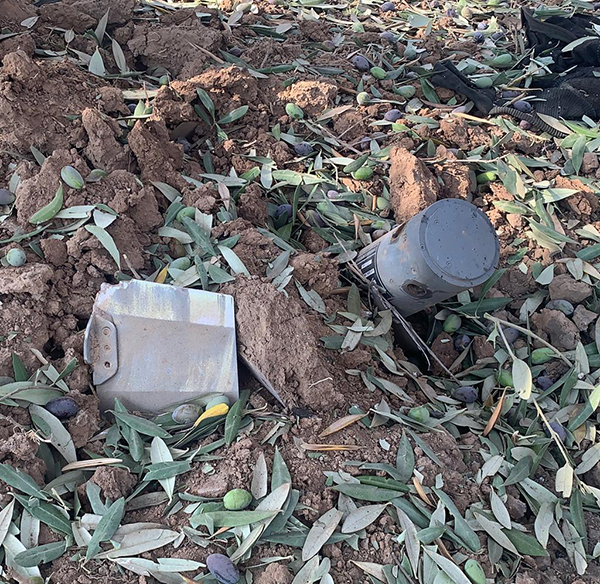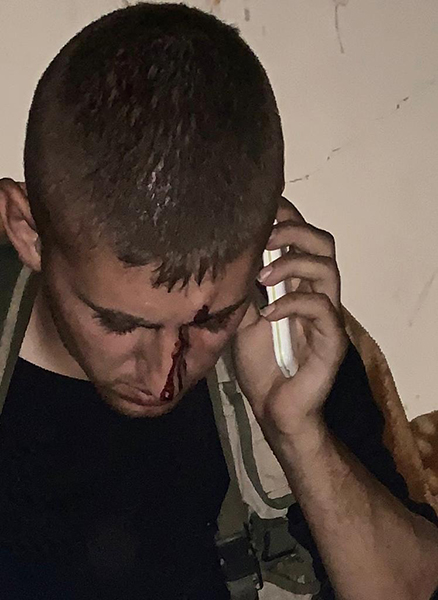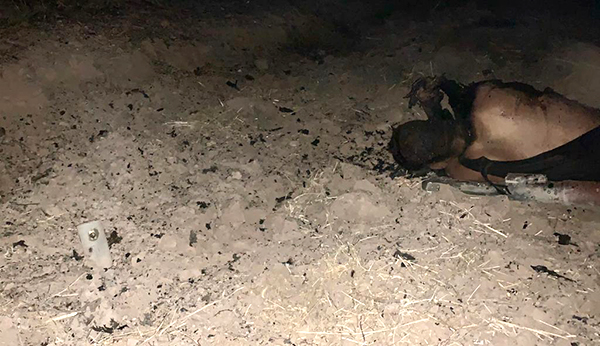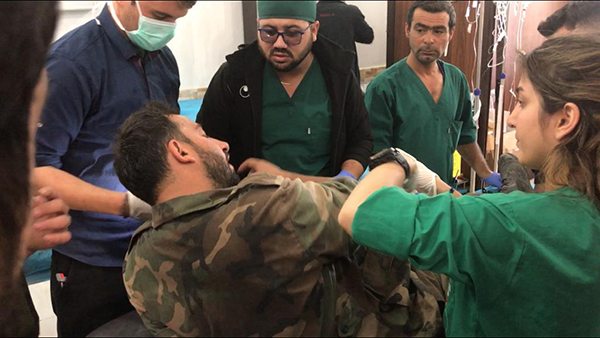Turkish Drones Rain Indiscriminate Death in Northeastern Syria
22 November 2019
Tel Tamir, Syria



Since the beginning of the Turkish/Free Syrian Army (FSA) attacks in northeastern Syria, drones have been used to attack the Syrian Democratic Forces (SDF), civilians, ambulances, and medical convoys. FBR vehicles have also come under attack from drones and Zau Seng, our Kachin medic/videographer, was killed when a drone strike hit seven meters behind us on Nov. 3.
The missiles fired from these Turkish drones and their capabilities are on par with U.S. Predator drones and have been terrorizing the skies since the attacks began in October. Highly effective weapons, they fly constantly in support of the Free Syrian Army, Turkey’s proxy force. One round from a drone obliterated a Humvee, shattering the vehicle and killing everyone inside it. Five ambulances have been hit by drones. The SDF and other groups have no defenses against the drones.
For us, these drones have often stymied or slowed our rescue attempts to the extent that people have died before we could get to them.
- During Nov. 6-8, 26 people were killed and two wounded by drones just north of Tel Tamir.
- On Nov. 9, six people were killed by Turk/FSA drones and mortars and 30 were wounded in the Umm Kayf area north of Tel Tamir. They were all Syrian Army soldiers, including one general who was wounded, except for a Kurdish Red Crescent (KRC) medic who was also wounded.
- At 3:30 p.m. on Nov. 10, a Turkish drone strike hit an SDF position at Umm Kayf, three kilometers north of Tel Tamir. Four people were wounded and evacuated to Tel Tamir Hospital.
- On Nov. 11, Turkish drone strikes and tank fire wounded 20 people, four kilometers northeast of Tel Tamir.
- On Nov. 16, a Turkish drone strike hit the hiding location for our ambulances at a CCP. We had left just before the attack so no one was hurt or killed. Video of the buildings after the strike is available here.
So far, we’ve been able to help recover 90 bodies and help treat and/or rescue 160 wounded. Those numbers are small compared to those of Tel Tamir Hospital which has seen over 1,000 people wounded and over 200 killed, half of which have been from drone strikes.

A Window of Opportunity for Rescues

Despite the drone attacks, we continue to help as we can by providing medical and rescue support. The fighting on Nov. 11 included constant mortars and drones from the Turkish/FSA forces and Turkish tanks. We helped treat some wounded by drone strikes and also treated one Christian militia member who had been hit by shrapnel from a Turkish tank.
One of the last men we treated, an SDF soldier, told us about a drone strike that hit about four kilometers from where we had picked him up. Earlier that day, he was a part of a group of six men who had gone to recon the enemy and ended up in a freshly plowed field with the enemy on a hill above them, directing heavy machine gun fire down on the group. About 700 meters away from the enemy, the men were hit by a drone strike. He wasn’t sure if his friends were dead or if they were still alive out there.
We prayed and talked about going out to try and find his friends. We talked to his commander who said to wait until the drones overhead had passed and so we did.
We got to the abandoned village at the edge of the field the man had told us about and found both Syrian Army and SDF troops who were trying to stop the Turkish tanks with AK-47s and rocket-propelled grenades (RPGs). We saw the two dead bodies and realized that recovering them would bring us to within 400 meters of the enemy in open fields. The enemy’s hilltop position, along with their machine guns, cannons, and drones would slaughter us. We couldn’t see anyone living but the soldier told us it was possible.

We stopped and prayed again. I asked the Syrian commander about waiting until it was dark to attempt the recovery of the bodies. He said, “Well, it looks impossible, but the only possible way is dark.” We decided to go under the cover of darkness.
Our team included myself; DTAK, our Karen videographer; Joseph, our Karen medic; Adam, a volunteer; Mohammad, our coordinator; a brave Kurdish medic from the KRC who had been living in Sweden; and the SDF soldier who knew the area where the attack had happened.
We waited until the beginning of sunset, when it was dark enough to move slowly without being seen but still light enough to use our naked eyes. I could only see one body before it grew too dark and I had to use night vision to find the other bodies.
When we reached the bodies we found that two had been incinerated by a drone strike. One man was missing his upper torso and his head and the body of another man was mangled and badly burned. We could see the drone that hit them and it had Turkish markings on it.
After finding those two men who had died, we continued looking for the other three. Our SDF friend started calling out the name of one of his friends as we moved forward quietly, getting closer to the enemy. Fortunately, the moon hadn’t come up yet and it was still dark. Carefully, we moved through the open fields. That’s when we heard a call back saying, “Is it you? Is it you?”
We reached the missing friend of the SDF soldier and found that he was wounded but still able to walk. He had spent the entire day hiding in a furrow in the field, pretending he was dead.
Eventually, we found two more, both of whom were wounded but ambulatory. We got all of them out, but one man shook us off, saying that even though he was wounded he wanted to go back and keep fighting. I tried to stop him but couldn’t. He disappeared into the night.
Joseph treated the other two men and we put them in the ambulance along with the dead bodies. We drove out quietly, without lights. Right when we turned the corner that put us out of the direct line of enemy fire, a near-full moon came up, lighting up the entire area.
Wow, I thought. Thank you, Lord, for that window of opportunity between sunset and moonrise to get these people out.
Remaining Life in Tel Tamir
As the Turks/FSA have pushed south from the Turkey-Syria border, the frontline has moved closer to Tel Tamir and is now about 4-5 kilometers north of Tel Tamir, bending to within 3.5 kilometers west of the town.
Most Christians fled when ISIS attacked but some returned after ISIS was defeated. Now that the Turks and FSA are attacking, Christians and other groups have had to flee the area again. There are about 200 Christians remaining in Tel Tamir. The general population in the area has dropped from 16,000 to 3,000 people.
Tel Tamir has the only hospital in this area and all wounded civilians and military personnel are treated here. If Tel Tamir falls, not only will anyone here be slaughtered, but there will be no hospital available for anyone in the surrounding areas.
With the continuing attacks, Christian militias have moved up into Tel Tamir to help defend this historically Christian area. Although small, the Christian militia said it would defend this area even if no one else would.

Recommendations and Requests
Families continue to flee. On, Nov. 16, we were in an area that once had 1200 people in it but had dropped to only 15 left.
As we move forward into a new week, we continue to pray for a no-fly zone, for the airstrikes to stop, for the attack forces to retreat back to Turkey, and for people to be able to return home safely. We continue to encourage the involved governments to help those under attack and find a solution to the conflict so that no more lives are lost here.
Thank you and God bless you,
Dave Eubank and the Free Burma Rangers


